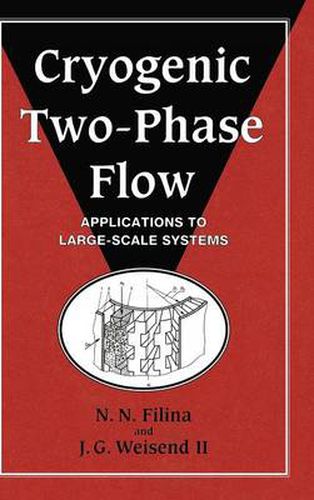Readings Newsletter
Become a Readings Member to make your shopping experience even easier.
Sign in or sign up for free!
You’re not far away from qualifying for FREE standard shipping within Australia
You’ve qualified for FREE standard shipping within Australia
The cart is loading…






Cryogenic systems that involve two-phase (vapour-liquid) flows are widely used in industries such as aerospace, metallurgy, power engineering, and food production, as well as in high energy physics research. The purpose of this book is to describe characteristic features of cryogenic systems involving two-phase flow, create mathematical models of these systems, and then show how the models may be used to develop optimal designs for practical cryogenic systems. Since transient phenomena can produce severe and unexpected effects in cryogenic systems, the authors pay particular attention to this important topic. Examples in the book are drawn from cryogenic fluid transport, gasification, and the stabilisation of superconducting magnets. Much of this work is related to the development of large Russian systems in the areas of space technology, energy research, and particle physics.
$9.00 standard shipping within Australia
FREE standard shipping within Australia for orders over $100.00
Express & International shipping calculated at checkout
Cryogenic systems that involve two-phase (vapour-liquid) flows are widely used in industries such as aerospace, metallurgy, power engineering, and food production, as well as in high energy physics research. The purpose of this book is to describe characteristic features of cryogenic systems involving two-phase flow, create mathematical models of these systems, and then show how the models may be used to develop optimal designs for practical cryogenic systems. Since transient phenomena can produce severe and unexpected effects in cryogenic systems, the authors pay particular attention to this important topic. Examples in the book are drawn from cryogenic fluid transport, gasification, and the stabilisation of superconducting magnets. Much of this work is related to the development of large Russian systems in the areas of space technology, energy research, and particle physics.